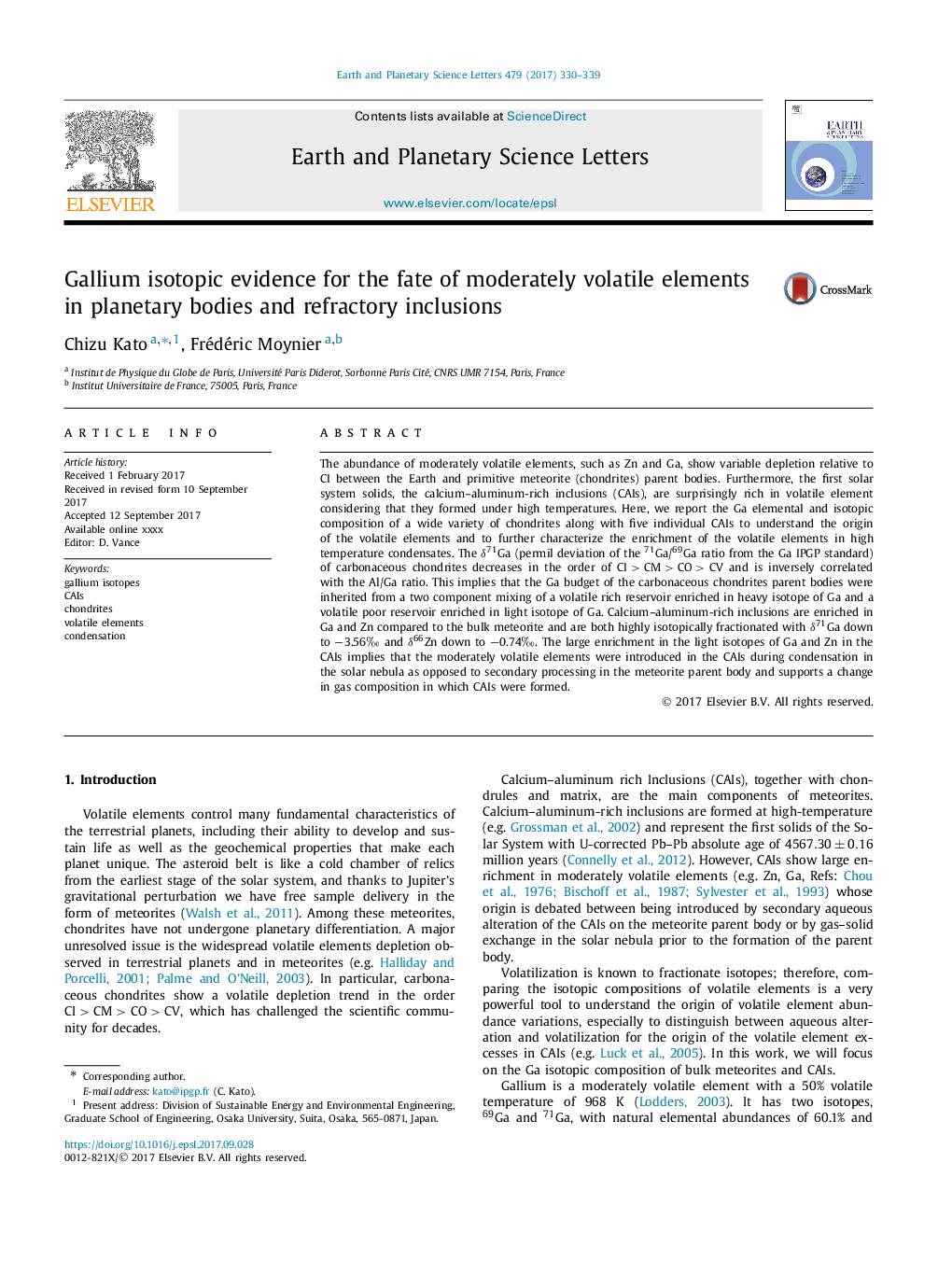| کد مقاله | کد نشریه | سال انتشار | مقاله انگلیسی | نسخه تمام متن |
|---|---|---|---|---|
| 5779610 | 1634677 | 2017 | 10 صفحه PDF | دانلود رایگان |
عنوان انگلیسی مقاله ISI
Gallium isotopic evidence for the fate of moderately volatile elements in planetary bodies and refractory inclusions
ترجمه فارسی عنوان
شواهد ایزوتوپ گالیم در مورد سرنوشت عناصر فرارانه ای که در بدن های سیاره ای و غیر قابل انعطاف وجود دارد
دانلود مقاله + سفارش ترجمه
دانلود مقاله ISI انگلیسی
رایگان برای ایرانیان
موضوعات مرتبط
مهندسی و علوم پایه
علوم زمین و سیارات
علوم زمین و سیاره ای (عمومی)
چکیده انگلیسی
The abundance of moderately volatile elements, such as Zn and Ga, show variable depletion relative to CI between the Earth and primitive meteorite (chondrites) parent bodies. Furthermore, the first solar system solids, the calcium-aluminum-rich inclusions (CAIs), are surprisingly rich in volatile element considering that they formed under high temperatures. Here, we report the Ga elemental and isotopic composition of a wide variety of chondrites along with five individual CAIs to understand the origin of the volatile elements and to further characterize the enrichment of the volatile elements in high temperature condensates. The δ71Ga (permil deviation of the 71Ga/69Ga ratio from the Ga IPGP standard) of carbonaceous chondrites decreases in the order of CI>CM>CO>CV and is inversely correlated with the Al/Ga ratio. This implies that the Ga budget of the carbonaceous chondrites parent bodies were inherited from a two component mixing of a volatile rich reservoir enriched in heavy isotope of Ga and a volatile poor reservoir enriched in light isotope of Ga. Calcium-aluminum-rich inclusions are enriched in Ga and Zn compared to the bulk meteorite and are both highly isotopically fractionated with δ71Ga down to â3.56â° and δ66Zn down to â0.74â°. The large enrichment in the light isotopes of Ga and Zn in the CAIs implies that the moderately volatile elements were introduced in the CAIs during condensation in the solar nebula as opposed to secondary processing in the meteorite parent body and supports a change in gas composition in which CAIs were formed.
ناشر
Database: Elsevier - ScienceDirect (ساینس دایرکت)
Journal: Earth and Planetary Science Letters - Volume 479, 1 December 2017, Pages 330-339
Journal: Earth and Planetary Science Letters - Volume 479, 1 December 2017, Pages 330-339
نویسندگان
Chizu Kato, Frédéric Moynier,
